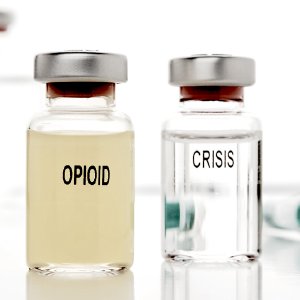Officials See Heroin Increase as Prescription Drug Abuse Decreases

In the ongoing battle to put an end to drug abuse in our culture, it often appears that as soon as you put out one fire, another one springs up in another place. A recent report in the Petoskey News out of northern Michigan quotes a Detective Lieutenant with the Michigan State Police and director of the local narcotics enforcement unit as saying that the War on Drugs is similar in this respect to the efforts of law enforcement to wipe out drinking and driving. No matter how hard police and sheriff’s departments across the country work, many people continue to break the law by driving under the influence of alcohol.
The fight against DUI and the War on Drugs have in common the fact that they are both waging an uphill battle against the fact that people who drink and drive and who use drugs are commonly addicted, and they are not merely choosing to break the law. Similarly, drug dealers recognize that the widespread prevalence of addiction means that they continue to have a lucrative marketplace where the potential profits outweigh the risk of being arrested and sent to prison. An example of how this issue poses a problem to law enforcement can be seen in how drug abuse trends shift when the police have had success in stamping down on one kind of drug, only to see another become increasingly common in its place.
Painkiller Abuse in Recent Years

Michigan and the rest of the United States has seen an enormous explosion over recent years in the rates of prescription drug abuse, a situation which has been described by the Centers for Disease Control and Prevention (CDC) as a “deadly epidemic.” More than 12 million people abused prescription painkillers in 2010, a number which includes 2 million who first began to engage in nonmedical use of the drugs that year. Painkillers are now the most widely prescribed type of drug, and they are second only to marijuana in terms of illicit use throughout the country.
The spread of painkiller abuse throughout society is taking a heavy toll, with 15,000 people now dying of overdose every year, a figure which is greater than both heroin and cocaine combined, while for every person who dies there are many others who suffer devastating physical consequences of their drug abuse. In response to such alarming trends, law enforcement agencies have greatly stepped up their efforts at prevention and enforcement and the officials in Michigan are reporting that they believe that there has been considerable success in this endeavor. They point to indicators such as fewer arrests and lower street values of confiscated drugs. At the same time that prescription drug abuse rates are falling, however, there has been an increase in the rates of abuse of heroin and methamphetamine.
Relation Between Painkillers And Heroin
The reason for this can be largely ascribed to the fact that painkiller medications such as Vicodin, Oxycontin and Percocet are all opiates, which means that they are synthetically derived from opium. Heroin is itself manufactured from opium, and it has many of the same effects as the popular painkillers. When taken in sufficient quantities or crushed and snorted or injected, opiate painkillers can produce a high with sensations including euphoria. Another thing they have in common is that the symptoms of withdrawal can be absolutely hellish.
Therefore, as the supply of prescription painkillers dries up as a result of tighter regulation of prescribing doctors and pharmacies as well as drug take-back days and drop-off bins provided by local law enforcement, addicts become desperate to get their next fix and to avoid the symptoms of withdrawal. Some seek help through non-drug based treatment and rehab programs, but all too many others take the easy way out by finding a drug dealer who can sell them heroin and they merely shift their addiction to this similar drug. It is clear to see that while it is important for law enforcement agencies to do their part in keeping drugs off the streets; this is not the final answer to the problem: what is needed is effective solutions for treating the causes of addiction.
Source:


 ®
®